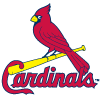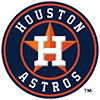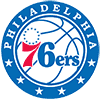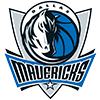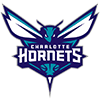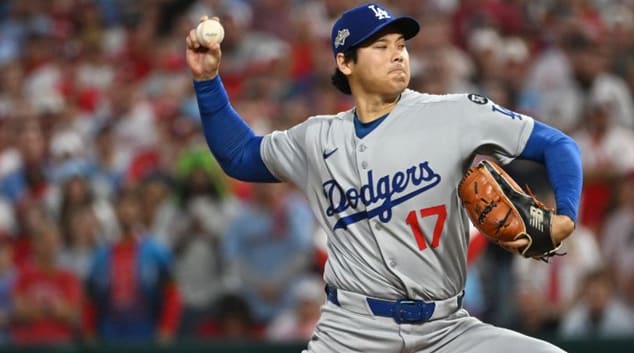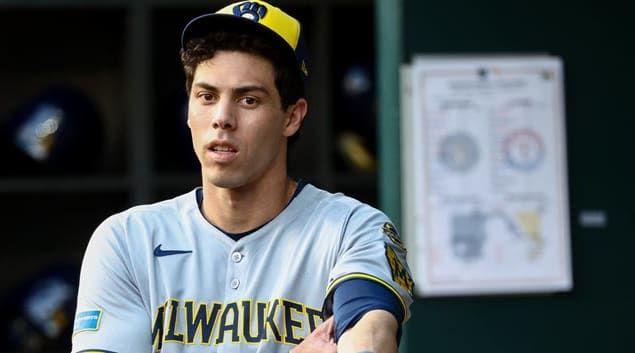Remember that scene in Bull Durham where Crash Davis requests that Ebby Calvin Nuke Laloosh hit the bull with the next pitch? Apparently our content tool does not allow me to embed a video as a specific time stamp, so jump ahead to the 1:05 mark to see the statement that accurately reflects how I want to respond to every inquiry I receive about pitching in 2022:
Anyone who states he definitively knows how pitching will play out in 2022 is being dishonest. We spent 2021 in uncharted territory coming off disrupted routines and workloads and saw many pitchers go down with injuries of one form or another. The postseason has offered little relief with impact arms going down early and often from either soft tissue or bone injuries as we witness both Atlanta and Houston crawl to the finish line with what is left of their respective pitching staffs.
The pending lockout means that pitchers and teams will possibly be separated longer than either party desires. It has to be uncomfortable for teams who manage every detail of these pitchers from offseason conditioning to daily regimens throughout the season. Teams must now give away the comfort which comes from that level of control along with the complete unknown of how bodies and arms will bounce back from a full season of work following the abbreviated season in 2020 because there is no such baseline from which to work. Teams normally prefer to keep year over year workload increases between
Remember that scene in Bull Durham where Crash Davis requests that Ebby Calvin Nuke Laloosh hit the bull with the next pitch? Apparently our content tool does not allow me to embed a video as a specific time stamp, so jump ahead to the 1:05 mark to see the statement that accurately reflects how I want to respond to every inquiry I receive about pitching in 2022:
Anyone who states he definitively knows how pitching will play out in 2022 is being dishonest. We spent 2021 in uncharted territory coming off disrupted routines and workloads and saw many pitchers go down with injuries of one form or another. The postseason has offered little relief with impact arms going down early and often from either soft tissue or bone injuries as we witness both Atlanta and Houston crawl to the finish line with what is left of their respective pitching staffs.
The pending lockout means that pitchers and teams will possibly be separated longer than either party desires. It has to be uncomfortable for teams who manage every detail of these pitchers from offseason conditioning to daily regimens throughout the season. Teams must now give away the comfort which comes from that level of control along with the complete unknown of how bodies and arms will bounce back from a full season of work following the abbreviated season in 2020 because there is no such baseline from which to work. Teams normally prefer to keep year over year workload increases between 20 to 30 percent, but teams will enter the 2022 season with a significant amount of pitchers well above that comfort zone.
A total of 325 pitchers finished the 2021 season with a year-over-year increase in workload of at least 30 percent. If we look at the pitchers by innings pitched totals year over year, the chart shows just how many had a significant jump in innings:
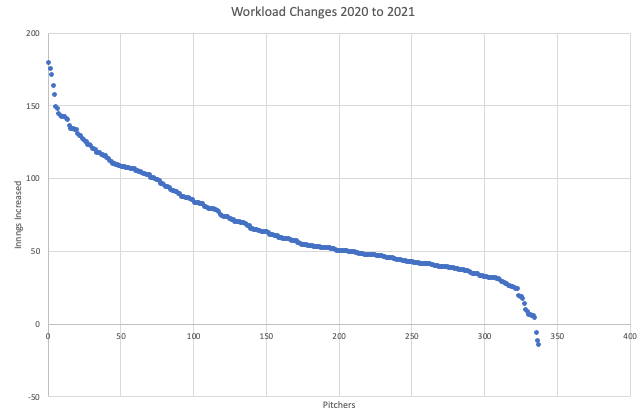
Let's look at some of the pitchers who are coming off massive jumps in workloads as a caution for 2022 more so than a prediction of doom. The purpose of highlighting these pitchers is to keep this issue as a factor or tiebreaker in your own draft plans when your choice comes down to two similar skillsets. We saw how risky pitching was in 2021 as injuries and ineffectiveness hit both the stars and scrubs with equal fervor. We will start by looking at those pitchers who hardly worked in 2020 due to missing the season with an injury, opting out, or late arrival on the scene before jumping into a few other notable names.
2020 IP | 2021 IP | Total Diff | % Diff |
|---|---|---|---|
Opted Out | 179 | 179 | 178900% |
Stroman's final 2021 numbers were nearly identical to what he did in 2019, which is rather phenomenal considering he was away from live action for all 2020 by his own choice. Over the course of the season, he did see some decline in his velocity as his sinker began the year at 92.6, losing one mile an hour over the course of the season. He spent 2020 doing his own conditioning and workouts, which we cannot measure, but he literally did not miss a beat with his production and now takes his talents to the free agent market.
2020 IP | 2021 IP | Total Diff | % Diff |
|---|---|---|---|
Opted Out | 170.1 | 170.1 | 170100% |
Rodriguez, at times, arguably was better in 2021 than he had been in previous seasons. He allowed one or zero runs in nine of his 31 appearances in 2021, but also allowed five or more runs in six of the remaining 22 outings. He got stronger velocity-wise as the season went on, beginning the season averaging 91.6 with his fastball and finishing averaging 92.6. He came into the year just once pitching more than 140 innings in a season, and it was in 2019 so we have no real history of how the increased workload will impact him and his ever-balky knee in a rebound season going from fighting for his health to throwing 170.1 innings in the regular season and playoffs.
2020 IP | 2021 IP | Total Diff | % Diff |
|---|---|---|---|
INJ | 144.1 | 144.1 | 144100% |
Taillon handled the post-Pittsburgh conversion as well as anyone could while missing 2020 and pitching in Yankee Stadium. He pitched effectively with the four-seamer that Pittsburgh devalued, but his secondary pitches — the slider in particular — betrayed him. He has but one fully healthy season in his professional career, and it came the season before his elbow failed him for a second time in his career causing him to miss most of 2019 and all 2020.
2020 IP | 2021 IP | Total Diff | % Diff |
|---|---|---|---|
| 3.2 | 178.1 | 174.3 | 5466% |
Irvin worked in the alternate camp with the Phillies before making a very late appearance in 2020. Oakland acquired him, threw him in the rotation when some of its higher profile arms failed to answer the bell, and watched him have a rather surprising campaign given his lack of real stuff. Irvin worked 161.1 innings in Triple-A in 2018, but had moved to the bullpen between Triple-A and the big leagues in 2019 totaling 135.1 innings before the 2020 workload. He has a few red flags involved with the lack of real stuff, the change of roles and the big jump in workload that should sufficiently scare enough people away.
2020 IP | 2021 IP | Total Diff | % Diff |
|---|---|---|---|
| DNP | 129 | 129 | 129000% |
The only work McClahanan got in real game action was 4.1 innings in four postseason games in 2020. He spent all 2021 in the big leagues while the Rays allowed him to exceed 90 pitches just four times in his 25 outings, working past the fifth inning in six outings. The new workload did impact his velocity in season as his average fastball tracked as such over the course of the season:

Given the organization's history of handling pitchers, it would be wise to be conservative in your own expectations of how much McClanahan is going to work next season.
2020 IP | 2021 IP | Total Diff | % Diff |
|---|---|---|---|
| DNP | 124.1 | 124.1 | 124100% |
Gilbert came out of the pitching factory known as Stetson College in DeLand, Fla. The small school in north central Florida has produced two Cy Young winners in Jacob deGrom and Corey Kluber, and now Gilbert is impressing right of the gate. He worked 135 innings in his first professional season across three levels of the Seattle system and then totaled 124.1 last season with just five of those innings coming in the minors. Seattle managed Gilbert's workload much like Tampa Bay did with McClanahan, but this was still a jump in workload for a young arm and should be handled in a similarly conservative manner as McClanahan.
2020 IP | 2021 IP | Total Diff | % Diff |
|---|---|---|---|
| DNP | 129.2 | 129.2 | 192200% |
Manoah's large body type elicits comparisons to Lance Lynn and may assuage any concerns about 2022 workload, but I am honestly perplexed on how to handle this one. Manoah's workloads by season, when looking back to his college and minor league seasons are as such:
- 2017: 55.2 IP
- 2018: 54.0 IP
- 2019: 125.1 IP
- 2020: Alternate site
- 2021: 129.2 IP
Manoah's 2021 workload was in-line with his 2019 effort, but his mid-summer injury where he slipped on the stairs in Buffalo and bruised his back allowed him to avoid working another 20-25 innings on the season. He turns 24 this winter, but I have to believe Toronto will want to manage his innings again in 2022 and not allow him to take on a Lynn-like workload at this young age.
2020 IP | 2021 IP | Total Diff | % Diff |
|---|---|---|---|
| 61.2 | 226 | 164.7 | 269% |
Buehler was one of just four pitchers to work at least 200 innings in 2021, joining Zack Wheeler, Adam Wainwright and Sandy Alcantara. He worked 207.2 in the regular season and another 18.1 in the postseason in 37 starts. He went from 161 innings to 195 from 2018 to 2019 before the 2020 season was limited by a mid-sprint blister issue limiting him to eight regular-season starts along with five starts in the postseason. Maybe the tight pants help him avoid injury, but this was a sizable workload increase to keep in mind when you're deciding whether to pull that early lever for him in drafts, as he has gone 13 and 17 in the two early NFBC drafts this month.
2020 IP | 2021 IP | Total Diff | % Diff |
|---|---|---|---|
| 54.2 | 205.2 | 151 | 279% |
Alcantara picked up where he left off in 2019 with workload after the abbreviated 2020 season due to injury — 23 of his 33 starts were quality starts, trailing only Buehler who had 27. Alcantara's overall numbers might have looked even better if not for the 18 earned runs he allowed in five innings facing the Rockies and Dodgers this summer. Had he been more effective in either game, he would have also worked even more innings. He suffered no such degradation in velocity throughout the season as his numbers were consistent month over month. Still, we're talking about a pitcher who essentially has two 200 inning seasons under his belt before his 26th birthday who has to date avoided a major injury.
2020 IP | 2021 IP | Total Diff | % Diff |
|---|---|---|---|
| 14.1 | 163 | 148.2 | 1056% |
Miley recently moved to the Cubs after the Reds kicked off their penny-pinching rebuilding efforts and decided not to pay Miley and threw him to waivers. Miley enjoyed a strong bounce-back season under the watch of the pitching crew in Cincinnati and earned 12 wins along with a surprising 3.37 ERA. Miley has mostly made a career of taking the ball every fifth day and working five to six innings into games, so the big jump in workload is not as concerning as it is with the others. The move from Cincy to Chicago does nothing for his fantasy value unless Miley can pitch effectively enough to be flipped to a contending team that can help him get those wins by working through five innings.
2020 IP | 2021 IP | Total Diff | % Diff |
|---|---|---|---|
| 58 | 202.1 | 144.1 | 248% |
The last we saw Morton, he was somehow striking out hitters while pitching on a broken leg. 2022 could likely be the end of the line for Morton, but the workload is not uncharted territory for him. The veteran hurler worked 204.2 innings in 2019 in the regular season and playoffs for Tampa Bay and has mostly shed his injury label from earlier in his career. The pandemic interrupted a stretch of baseball where he had increased his workload over three consecutive seasons. Morton now has two rings, and one without any stain on it. Atlanta picked up his 2022 option at $20M, so one would expect them to push him again as long as his body continues to avoid the injuries that plagued it earlier in Morton's career.
2020 IP | 2021 IP | Total Diff | % Diff |
|---|---|---|---|
| 47 | 157 | 110 | 234% |
Kikuchi is a free agent after declining his player option to test the open waters this winter. He has lowered his ERA each of the last three seasons while pitching around issues with homers that have plagued him in two of the last three seasons. He came into the season with some new-found velocity, but it dissipated as the season went on:
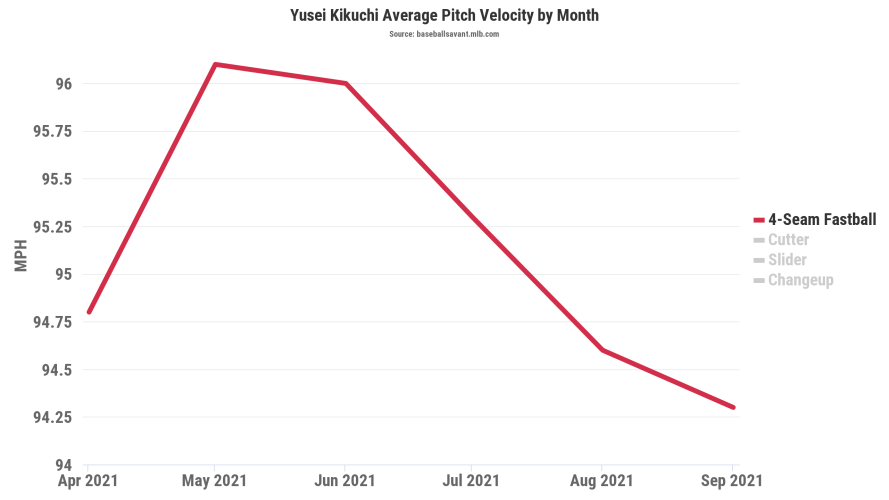
As Rob Silver points out, that is a problem:
Correlation isn't causation but…Kikuchi has made 38 starts the last two years.
In 9 of those games, his fastball averaged 96+. In those games his ERA was 2.39
10 games his FB avg'd in the 95s. His ERA was 3.91
19 games it was < 95 MPH. His ERA in those games? 6.64. https://t.co/JO51TssC0M
— Rob Silver (@RobSilver) November 4, 2021
Study long and hard at those data points and the graph before getting too aggressive in your Kikuchi acquisition plans this winter.
2020 IP | 2021 IP | Total Diff | % Diff |
|---|---|---|---|
| 14.1 | 171 | 156.7 | 1113% |
The final pitch Garcia threw in the 2021 season still has not landed yet, and it was a microcosm of the concerns with him heading into the 2022 season. The young arm went from working 109 innings in A-ball in 2019 to hardly working in 2020, to then throwing 171 innings last year and looked gassed toward the end of it. He was pitching in uncharted territory last season, so keep that in mind as you look to your own draft plans with him for 2022.
2020 IP | 2021 IP | Total Diff | % Diff |
|---|---|---|---|
| 48.1 | 203 | 154.7 | 322% |
Eovaldi had a terrific season for Boston and continues to pitch well for them after struggling through his first full season with them in 2019. This season saw him throw his highest workload since the 2014 season when he fell one out short of a 200-inning season with Miami. It is worth remembering that Eovaldi has two TJ surgeries to his elbow, with the most recent in the 2016 season. He has been the best example of pitchers succeeding after multiple TJ surgeries as most have not. Can he continue to be that outlier in 2022? The history of his work says more missed time is coming given he has been on the injured list nearly ever season of his career.











